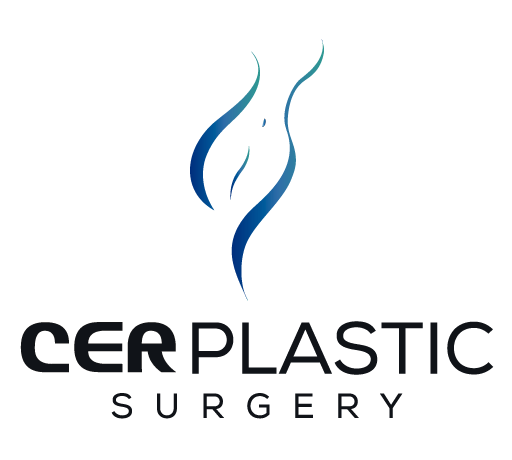Facelift Surgery
Are you considering a facelift surgery to rejuvenate your appearance and turn back the hands of time? Understanding what to expect before, during, and after the procedure is essential to make an informed decision about this transformative journey.
Facelift surgery is a cosmetic procedure designed to address signs of aging in the face and neck region. Over time, our skin loses elasticity, leading to sagging, wrinkles, and the formation of jowls. Factors such as sun exposure, genetics, and lifestyle choices can accelerate these aging effects.
But before embarking on your facelift journey, it’s crucial to understand the various facelift techniques, potential risks, recovery period, and expected outcomes. Each individual’s needs and facial structure are unique, so a personalized approach is vital for achieving natural-looking results that complement your overall appearance.
What should I expect from a facelift consultation?
Consultation: Surgeons assess concerns, discuss aesthetic goals and explain facelift surgery during the initial meeting. Qualified, knowledgeable, and trustworthy professionals prioritize your safety and satisfaction during facelift surgery.
Facelift empowers confidence, and comfort in your skin, beyond turning back the clock. Discover its transformative impact. By addressing signs of aging, you can feel rejuvenated and rediscover your natural radiance.
Non-surgical treatments offer temporary improvements. The facelift surgery difference provides long-lasting and dramatic results that cannot be achieved with non-invasive methods alone. The decision to undergo a facelift is deeply personal.
How does a facelift work?
Facelift Surgery is a surgical procedure that aims to tighten and lift the underlying facial muscles and tissues, remove excess skin, and re-drape the skin for a smoother and more youthful look.
The procedure can address various concerns, including:
Facelift surgery is particularly effective in correcting sagging skin in the midface, jowls, and neck, resulting in a more defined jawline and improved facial contours.
Wrinkles and Fine Lines: Deep wrinkles and fine lines around the mouth and eyes can be softened or eliminated through facelift surgery.
Facial Volume Loss: Some facelift techniques, such as fat grafting or dermal fillers, can restore lost volume in the face, providing a more youthful and plump appearance.
Jowls and Jawline: Facelift surgery can address the formation of jowls and redefine the jawline for a more sculpted and youthful

What are the types of facelifts?
- Mini facelift. A modified version of the facelift, the mini facelift targets loose skin around the neck and jawline.
- Mid-facelift. Also known as a cheek lift, a mid-facelift focuses on rectifying sagging skin from the upper mouth to the eyes. The area includes the cheeks and nose.
- Nonsurgical facelift. A nonsurgical facelift procedure doesn’t require general anesthesia or large incisions, but it still targets signs of aging, including sagging skin, creases, and wrinkles. Vampire facelifts, liquid facelifts, and thread lifts are examples of nonsurgical procedures that target skin on the face.

Who is Ideal Candidate for Facelift Surgery
Candidates for facelift surgery typically include men and women who are experiencing visible signs of facial aging and are in good overall health. Patients need to have realistic expectations and a positive outlook on the procedure. Ideal candidates may have:
Patients with noticeable sagging skin in the midface and neck may benefit from a facelift to achieve a more youthful appearance.
Good Skin Elasticity: Candidates with relatively good skin elasticity tend to have more successful and longer-lasting results.
General Good Health: Patients should be in good overall health and without any medical conditions that could impair healing.
Non-Smokers: Non-smokers are generally better candidates for facelift surgery, as smoking can interfere with the healing process and increase the risk of complications.
What are the potential risks and side effects of facelifts?
Like any surgical procedure, facelift surgery carries certain risks and potential complications. Some of the common risks include:
Infection: Although rare, infections can occur after surgery and may require medical treatment.
Scarring: While the incisions are typically well-hidden, there is a risk of noticeable scarring.
Numbness or Sensation Changes: Temporary or permanent changes in sensation, such as numbness or tingling, may occur in the face.
Hematoma: A collection of blood beneath the skin may form, requiring drainage.
Poor Wound Healing: Some individuals may experience delayed wound healing, leading to prolonged recovery.
How should I prepare for a facelift?
Preparing for facelift surgery involves several essential steps:
Consultation: Schedule a consultation with a qualified plastic surgeon to discuss your goals and medical history.
Medical Evaluation: Undergo a thorough medical evaluation to ensure you are a suitable candidate for the procedure.
Medication Adjustments: Avoid certain medications and supplements that can increase the risk of bleeding.
Quitting Smoking: If you smoke, your surgeon may recommend quitting to enhance the healing process.
Before and After the Day of Surgery
On the day of surgery:
Preparation: Follow your surgeon’s instructions regarding fasting and medication.
Anesthesia: Facelift surgery is typically performed under general anesthesia or local anesthesia with sedation.
After surgery:
Recovery: Expect some swelling, bruising, and discomfort, which can be managed with medication and rest.Downtime: Plan for adequate downtime to allow for proper healing.
Follow-Up: Attend all scheduled follow-up appointments with your surgeon for proper monitoring.

How can I find a plastic surgeon?
If you have insurance, it likely won’t pay for a facelift, since facelifts are deemed a cosmetic procedure.
Ensure board certification by the American Board of Plastic Surgery or Facial Plastic and Reconstructive Surgery. This ensures that certain standards of education, expertise, and best practices are upheld.
If you’ve had friends or family members who have had facelifts, this may be a good place to start. Ask them if they were satisfied with their surgeon. Do your research. Be sure to choose a doctor you feel comfortable with.
You may want to meet with more than one plastic surgeon and get second and third opinions. An informed decision is a smart decision.
Takeaway
Facelift surgery is a transformative procedure that can turn back the clock and restore a more youthful and refreshed appearance. By addressing sagging skin, wrinkles, and other signs of aging, a facelift offers a comprehensive solution for those seeking to rejuvenate their facial features.
Consulting with a board-certified plastic surgeon will allow patients to explore their options and embark on a journey toward a more confident and revitalized version of themselves. As with any surgical procedure, understanding the risks, preparing appropriately, and following post-operative care instructions are essential to ensure a safe and successful outcome.
START A VIRTUAL CONSULTATION
A virtual consultation is when you send us photos of the places of your body where you’d like to improve. Then our surgeon analyzes it to confirm that you are a candidate for that particular procedure. We later inform you about our doctor’s decision and give you a quote with all the information about your surgery. Please, do be at ease that everything is confidential between yourself, the doctor, and the doctor’s representative.




